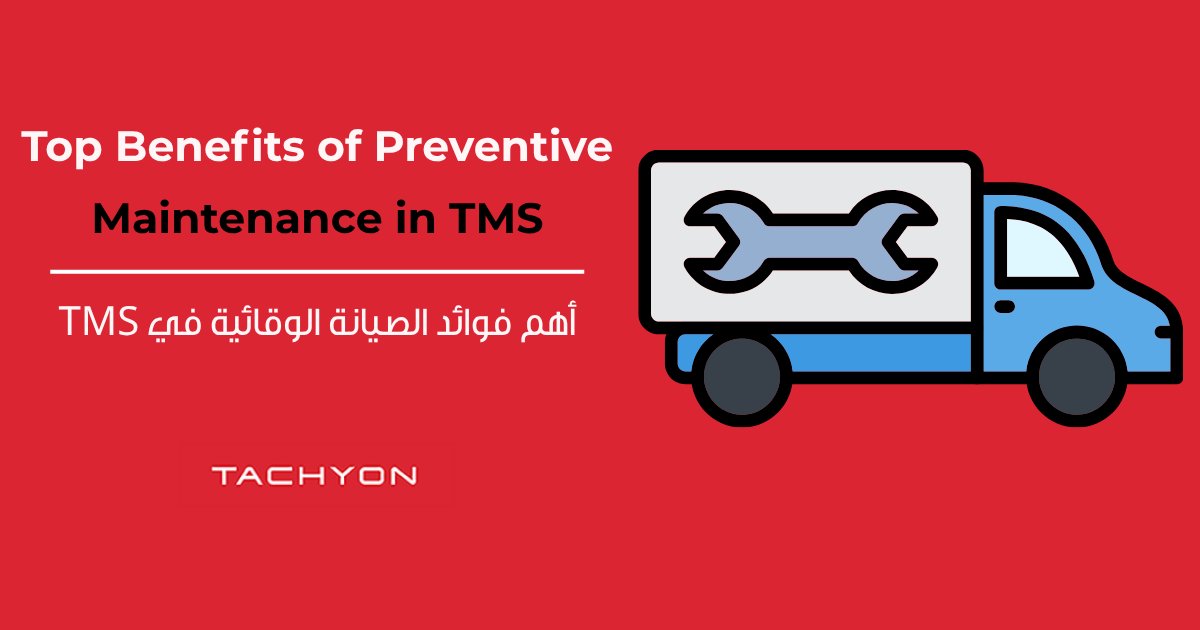Transportation Management Systems (TMS) play a major role in managing logistics and improving the flow of goods across different supply chains. These systems help the companies to plan, track, and manage transportation much more effectively. Preventive maintenance (PM) within a TMS refers to regularly scheduled checks and upkeep of transportation assets to avoid unexpected issues. When integrated into TMS, PM improves productivity, reduces downtime, and supports safer operations. At Tachyon, we believe strong planning leads to better performance. This blog highlights the top benefits of preventive upkeep in TMS and why it’s a smart move for any business in the logistics space.
Preventive maintenance refers to the regular servicing, inspections, and upkeep of fleet assets before problems occur. Unlike reactive maintenance, which responds to breakdowns, preventive upkeep focuses on avoiding those issues in the first place. A Transportation Management System helps by tracking the condition of vehicles, scheduling service appointments, and logging all upkeep activities in one place.
With the help of modern tools like data analytics, IoT sensors, and automated alerts, Transportation Management Systems software makes it easier to predict when a vehicle needs attention. This reduces downtime, lowers repair costs, and keeps operations running smoothly. Instead of waiting for something to go wrong, businesses can act early and protect their fleets. Preventive upkeep powered by TMS is no longer just a best practice; it’s a reliable way to improve performance, safety, and cost control in today’s fast-moving logistics world.
Top Benefits of Preventive Maintenance in TMS
Reduced Downtime and Service Interruptions
Vehicle breakdowns are unplanned, causing schedule disruptions, delays and unhappy customers. Having a timely alert in a Transportation Management System helps to avoid unexpected failures on the road. Vehicles are always ready for any mishaps, and deliveries always take place on time. It informs the drivers and makes repair teams proactive, thus reducing downtime. It keeps your operations running with no interruptions and your clients happy if your service is consistent and dependable and does not experience any interruptions.
Cost Savings on Repairs and Operations
The scheduled upkeep prevents costly emergency repairs, which can be a significant pressure on budgets. The system helps ensure problems are fixed early enough so you don’t have to shorten the life of vehicles and equipment. Better planning is better than last-minute repairs, which in turn means less overtime labour costs and less rental of replacement vehicles. This strategy saves you money in keeping with the lower overall operating expenses and keeping the fleet in good shape for longer intervals.
Improved Fleet Reliability and Performance
All the vehicles are kept in the best possible shape, and there are no unexpected breakdowns. Drivers can find their routes to be problem-free, and trucks will be reliable, which will increase on-time delivery rates. The reliability of this service reduces the pressure on planners and dispatchers, which allows them to spend less time dealing with crises and more time taking routes. With its proactive nature, the system boosts overall fleet performance, resulting in the smooth running of your business and happy customers.
Enhanced Safety and Compliance
Maintaining brakes, tires, engines, and other key vehicle components through Transportation Management Systems keeps your fleet safe on the road. This system helps your business meet necessary regulatory standards set by agencies like DOT and FMCSA. It also keeps detailed upkeep logs that act as proof of compliance during audits and inspections. This reduces risk, protects your drivers, and ensures your fleet is always prepared to meet legal safety requirements.
Data-Driven Decision Making
Due to Transportation Management Systems, you notice problems with certain cars and defective parts much earlier. It allows managers to act wisely about repairing, replacing or updating their fleet equipment. It supports the costs of upkeep compared to the value of these vehicles driving on the roads. Using data accordingly helps your fleet operations be more organized and effective, resulting in fewer surprises and increased profitability.
Longer Asset Lifespan
Routine upkeep helps extend the lifespan of assets, letting people use them for longer. TMS handles all the information about each vehicle’s use and wear over its lifetime. Because of this, your business plans its purchases sensibly to avoid buying more than it needs. Existing equipment can be used for extra time, raising profits and lowering expenses linked to updating the fleet.
Manages Scheduling and Route Planning
It allows maintenance schedules to align with delivery routes and periods of low demand. This synchronization minimizes disruptions to your logistics flow and keeps vehicles available when they are most needed. Efficient scheduling ensures priority loads get delivered on time without delays caused by upkeep. The result is smoother operations and better resource use throughout your fleet.
Environmental and Fuel Efficiency Gains
A well-maintained vehicle runs cleaner and uses fuel more efficiently. This system ensures engines and related parts operate optimally, reducing harmful emissions. This not only supports environmental goals but also lowers fuel costs. Implementing preventive maintenance promotes green logistics practices, helping your business reduce its carbon footprint and meet sustainability commitments.
Improves Customer Satisfaction
Reliable, on-time deliveries build stronger trust with your clients. When repairing is managed proactively, delays become rare, improving overall service quality. A dependable fleet enhances your company’s reputation and gives you a competitive advantage in the logistics market. Happy customers lead to repeat business and positive referrals, driving growth and success.
Common Challenges and How to Overcome Them
The challenges that many project managers continue to face are resistance to change, weak project management culture, poor data tracking and misalignment between repairing and operations. All these challenges can slow progress and cause costly mistakes. To tackle all such challenges, smart solutions are needed. Automation helps to save time; mobile apps improve access, and training builds skills across the team’s members. Analytics dashboards can also help in tracking your progress and making the right decisions. With today’s tools, we have the means to build a more connected, efficient, and productive work environment where everyone is on the same page and working towards the same goals.
Future of Preventive Maintenance in TMS
Preventive maintenance in Transportation Management Systems will become smarter and more automated in the future. Fleets can spot problems before they happen through the help of AI and predictive repairing. Through the involvement of real-time data, telematics and IoT sensors, it helps to make quick and better decisions. Self-scheduling systems fix maintenance without human input and machine learning models. They detect signs of failure which human beings would not notice. These tools cut downtime, save costs and keep vehicles going. Technology is growing, and so is preventive repair. It is becoming more accurate than previously and will help keep transport operations safe, efficient and future-ready.
Conclusion
In conclusion, preventive maintenance in TMS has obvious advantages where it offers cost savings, safety improvement, reliable operation and higher productivity. Businesses that invest proactively into maintenance don’t have costly breakdowns, and teams keep running smoothly. Tachyon understands how small changes in repairing can bring significant results. With the world moving towards revolution, proactive repairing is imperative to stay ahead of your competitors.
Frequently Asked Questions
How does TMS reduce fleet downtime?
It sends maintenance alerts in the same way it sends your freight, tracks the service history and schedules repairs during low-demand periods. This reduces unexpected failure and makes sure you have vehicles road-ready.
Is transportation cost possible with preventive repairing?
By handling the smaller issues early, you will be saving a lot in expensive repairs and emergency service calls and extend the lifespan of fleet assets.
Does preventive maintenance increase driver safety?
Many accidents can be avoided with regular checks on brakes, tyres and other components and drivers are encouraged to drive in safe, well-maintained vehicles.
How hard is it to implement preventive upkeep in TMS?
TMS supports modules such as scheduling, tracking and alerting that most modern TMS platforms have built into the feature set. Proper training only makes implementation straightforward and highly beneficial.





